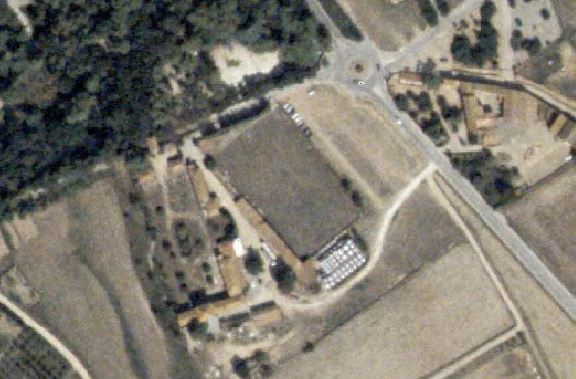Let me start by giving you some bearings. Peralada is a village in the far northeast of Catalunya, around 5 miles north of Figueres, and some 15 miles south of the border with France. Whilst Club de Fútbol Peralada have been around for 90 years, you’d be forgiven for not knowing much about them, as they’ve only appeared on the national football radar since 2016 when the club became an affiliate of Girona FC.

There are reports of football being played in Peralada as early as 1915, but the current club was founded in 1928, playing at the Camp de l’Estació, which was a fenced-off clearing to the south of the village, on the road to the train station. Football continued to be a low-key affair, with friendly matches against local clubs, before the Civil War put a stop to sporting activity in 1936. Even at its peak, Peralada had a population of just 2,600, and by the time hostilities had ended, the village had fewer than 1700 inhabitants. CF Peralada did not reform until 1951, by which time, the Camp de l’Estació had been levelled and converted to farmland. The Municipality had set aside funds to build a new enclosure, and in 1951 the Camp del Music opened, on land just to the south of the village’s Castle. The new home did not exactly inspire the reformed club, and CF Peralada bumped along at the lowest level of the Catalan amateur leagues until a lack of interest, and quite possibly players, saw the club take another break.

After a nine-year absence, CF Peralada returned, thanks in part to the efforts of Enric Serra, the mayor of Peralada. Serra would remain president of the club until the late 1980s, which saw a high of two seasons (1984-86) in the Primera Categoría Regional, or sixth tier. In 1989, the club is taken over by the Suqué-Mateu family, who owned the castle next door, and local golf courses, vineyards and casinos. On 11 September 1992, the club moved to their current home, the Camp Municipal de Peralada. Gradually, over the next decade, CF Peralada hauled itself up the league ladder, eventually reaching the Tercera for the first time in 2002. Their stay in the fourth tier ended in 2007, and it would take a further seven seasons before CF Peralada regained a place in the Tercera. By now, things were beginning to stir at the Estadi Montilivi, some 30 miles to the south of Peralada. With Girona CF poised for a promotion to La Primera, thoughts turned to trying to bridge the gap between the First XI and their existing reserves, who sat in the Regional Preferente. Girona quickly identified CF Peralada as a potential farm club, and in June 2016, the two clubs came to an agreement whereby CF Peralada would become an affiliate club for a fixed term of five years.

Youth and money talks, and after an impressive first season in partnership, CF Peralada finished the 2016-17 season as runner-up in the Catalan Tercera. They fell at the final hurdle of the playoffs, losing out to Rápido de Bouzas, but financial help was at hand. Just a week after the disappointment of losing in the playoffs, the RFEF confirmed that CF Peralada had purchased a place in Segunda B, by paying €133,000 to the federation, the sum of the debt accrued by CF Gavà and CD Boiro. On 23 July 2017, the club changed its name to CF Peralada-Girona B.

The Municipal de Peralada is situated on the northern edge of the village, within a sports complex that also features a swimming pool, tennis courts and a full-size 4G football pitch, which CF Peralada use for training. Work originally started back in 1981, but lack of funds meant that the club did not move in for another decade. The principal feature is the main tribuna on the western side of the enclosure. 50 metres in length, it has 480 seats which are arranged in broad bands of green & white. The seating deck is raised above the changing facilities and covered by a cantilevered roof. Hardstanding areas on the four sides of the pitch, take the overall capacity to 2,000. The only other feature of note is at the north end of the enclosure. Here stands a 20 foot-high hedge, that would turn the followers of Brechin City green with envy!
